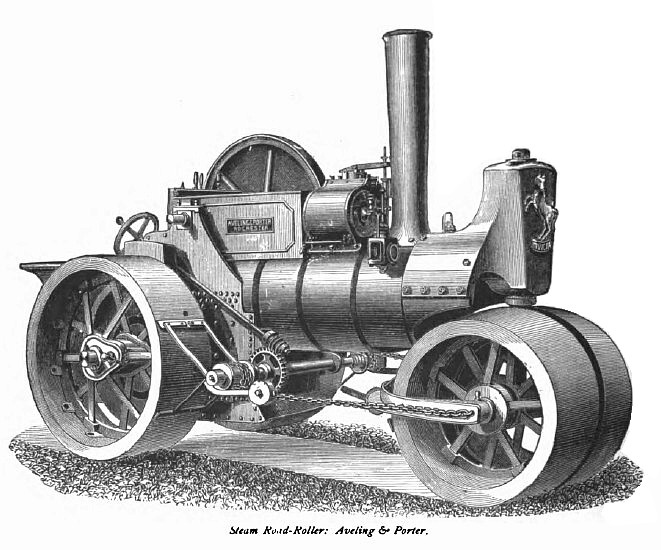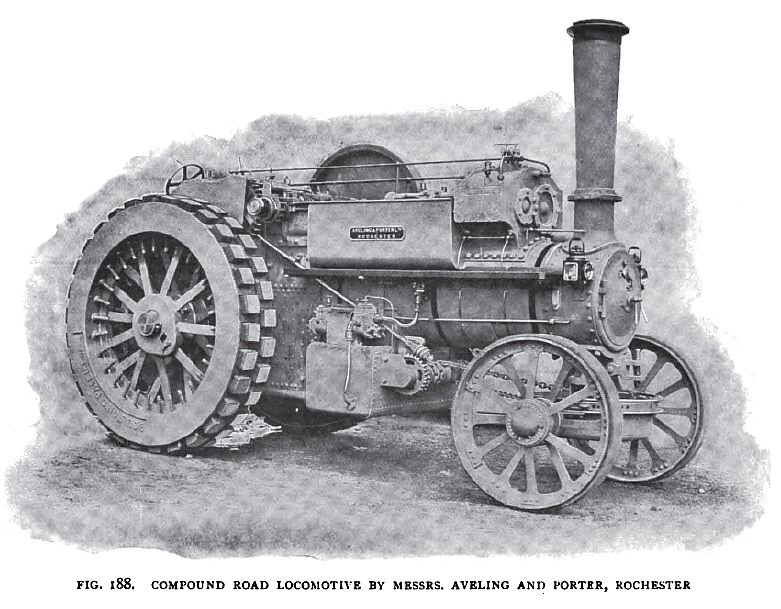
|

|
|
Steam Road Roller
|
Compound Road Locomotive
|
In 1856 Thomas Aveling produced the first steam plough. In 1858 Aveling acquired premises in High Street, Rochester, a workshop in Edward's Yard (near Free School Lane) and a foundry over the river in Strood that later became the Invicta Works. At the Smithfield Show of 1860, Thomas Aveling of Rochester exhibits an 8 hp patent locomotive engine invented by himself and made by Clayton and Shuttleworth and by 1861, in partnership with Henry Rawlinson, they started building steam engines to their own patented designs. The firm was know as Aveling & Rawlinson.
Richard Porter joined the company in 1862 and the name changed to Aveling and Porter.
At the Bath and West Society Show of 1862, Aveling and Porter showed a traction engine that they had driven 190 miles from Rochester to Bath in under 48 hours. At the 1862 International Show of the Agricultural Society they showed an agricultural locomotive engine for threshing, ploughing and general traction purposes. In 1864 they produced their first engine to run on rails and continued in this market until 1926. They developed a steam engine in 1865 and produced more of the machines than all the other British manufacturers combined and their steam roller was tested in Hyde Park, London, Military Road, Chatham and at Star Hill in Rochester, Kent and was a success. Aveling and Porter steam rollers were exported to Europe and as far afield as India and the USA.
1867 brought the production of the first steam roller weighing 30 tons for the Liverpool Corporation. At the 1876 Royal Agricultural Show at Birmingham with agricultural self-propelling engines of 4, 6, 8 and 10 hp. Also a 12 hp ploughing engine and a 10-ton roller. Thomas Aveling died in 1882 and was succeeded by his son Thomas Lake Aveling. Under Thomas Lake Aveling's direction, the company concentrated most of its efforts on the production of steamrollers. Aveling and Porter met about 70 per cent of the British market for road rollers in the early twentieth century. The firm continued to make various products such as traction engines, ploughing engines, steam wagons, and tramway locomotives, but many others were contracted out. Aveling and Porter threshing machines, for example, were made by Nalder and Nalder of Wantage. By 1895 the firm employed 1,000 workers.
After the First World War, Aveling and Archibald Maconochie, a friend and neighbor in Kent, promoted the formation of Agricultural and General Engineers. This was a publicly quoted holding company which took over the businesses of Aveling and Porter, James and Frederick Howard, and twelve other firms engaged in agricultural and related engineering. The intention was to rationalize the industry through the merger, but this was not fulfilled. The holding company's central overhead costs tended to outweigh savings from the limited amount of integration between the constituent companies. Production of Aveling and Porter steam wagons was transferred to Richard Garrett and Sons. Aveling and Porter's business began to suffer, and by 1928, when Aveling retired, the number of employees had declined and short-time working had been implemented for many of those that remained. The firm went into receivership in 1932 and Aveling and Porter acquired the assets of of Barford and Perkins, reorganizing as Aveling-Barford. 1937 Became a public company to raise £320,000 with Edward James Barford, William Geoffrey Barford and George Ruston Sharpley as directors. Claim they make 75% of all rollers in the UK at present. After World War II the company continued to make motor and steam rollers as well as expanding into other construction equipment. Aveling Barford is now part of the Thomson group of companies, which also includes Moxy articulated dump trucks.
The company produced around 12,200 steam powered vehicles and there are around 600 preserved.
This information was supplied courtesy of Grace’s Guide
Information Sources
- More history and machine information can be found at Grace’s Guide.
- Farmer’s Magazine Jul 1875 pgs 34-39
|
|